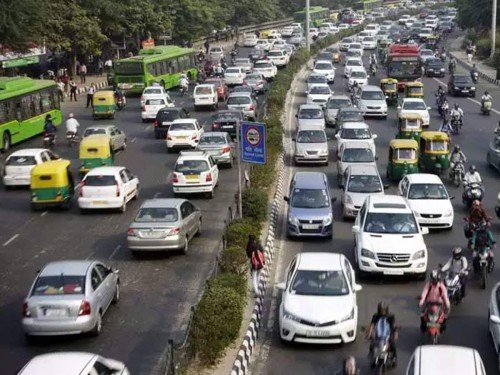
India is a country of over 1.3 billion people, and with such a large population, comes the need for an efficient and well-organized transportation system. However, India's transportation sector has been facing various problems that have impeded its growth and development. From traffic congestion to poor road infrastructure, the country has been grappling with numerous transportation problems that have not only affected its economy but also the daily lives of its citizens. In this blog post, we will take a look at some of the most pressing transportation problems in India and what can be done to address them.
Traffic Congestion
Traffic congestion is one of the most significant transportation problems in India. With an ever-increasing population and limited road space, India's cities are experiencing an unprecedented level of traffic congestion. This has not only led to increased travel times and reduced productivity, but it has also caused air pollution, increased fuel consumption, and increased stress levels among commuters.
To address this problem, the Indian government has taken several initiatives such as improving public transportation systems, constructing flyovers and underpasses, and promoting carpooling. However, these measures have not been enough to fully address the issue of traffic congestion. There is a need for a more comprehensive approach that involves improving the overall transportation infrastructure and promoting alternative modes of transportation such as cycling and walking.
Poor Road Infrastructure
Another significant problem faced by India's transportation sector is poor road infrastructure. India has one of the largest road networks in the world, with over 4.7 million kilometers of roads, but much of it is in poor condition. The roads are often narrow, poorly maintained, and lack basic amenities such as street lighting and proper drainage systems. This has led to an increase in road accidents and has made it difficult for vehicles to travel smoothly, especially during monsoon season.
To address this problem, the Indian government has initiated several programs such as the National Highways Development Project (NHDP) and the Pradhan Mantri Gram Sadak Yojana (PMGSY), which aim to improve the quality of roads and increase connectivity to rural areas. However, the implementation of these programs has been slow, and more needs to be done to improve the road infrastructure in India.
Lack of Public Transportation
India's public transportation system is another area that needs improvement. With the growing population and increasing urbanization, the demand for public transportation has risen, but the supply has not been able to keep up. The public transportation system in India is often overcrowded, unreliable, and lacks basic amenities such as air conditioning and proper seating arrangements.
To address this problem, the Indian government has taken several initiatives such as introducing metro rail systems in major cities and improving bus services. However, these measures have not been enough to fully address the issue of a lack of public transportation. There is a need for a more comprehensive approach that involves increasing the number of public transportation options and improving the quality of existing ones.
Lack of Intermodal Connectivity
Intermodal connectivity, which refers to the seamless transfer of passengers and cargo from one mode of transportation to another, is a crucial aspect of a well-functioning transportation system. However, in India, intermodal connectivity is often lacking, making it difficult for people to travel between different modes of transportation. This has resulted in increased travel times and reduced efficiency.
To address this problem, the Indian government has taken several initiatives such as improving the connectivity between different modes of transportation, such as trains and buses, and constructing new railway stations. However, these measures have not been enough to fully address the issue of lack of intermodal connectivity.








